Hebrew Keyboards
Hebrew Keyboards for Yiddish Information Processing
Note: This page deals with the traditional line of Yiddish/Hebrew keyboards only. For phonetic keyboards please see Shoshke-Rayzl Yuni’s Windows Phonetic Yiddish Keyboards; Gyula Zsigri’s Yiddish Phonetic keyboard, which works with Keyman; and Isaac L. Bleaman’s Macintosh Phonetic keyboard
Proposal for a Windows Hebrew-Yiddish Keyboard: (6/30/97)
Click here for a text file giving full detailed encodings corresponding to the following image.
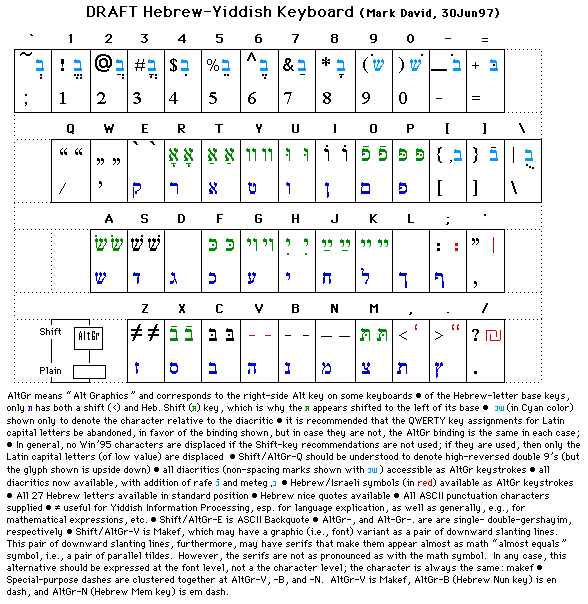
Various Hebrew Keyboard Designs
(For an explanation of the color system employed, see the bottom of this page.)
Macintosh Hebrew
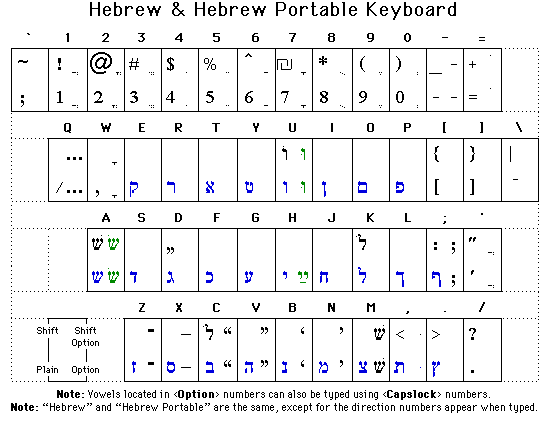
Windows 95 Hebrew
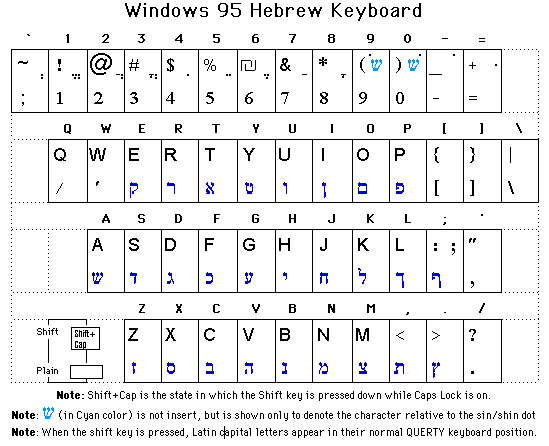
Yugntruf Yiddish Keyboard for Macintosh
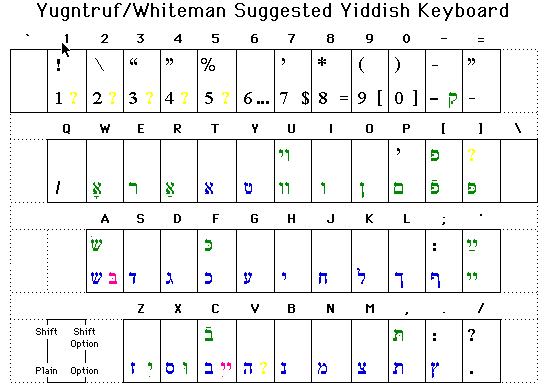
Royal Yiddish Manual Typewriter (ca. 1930)
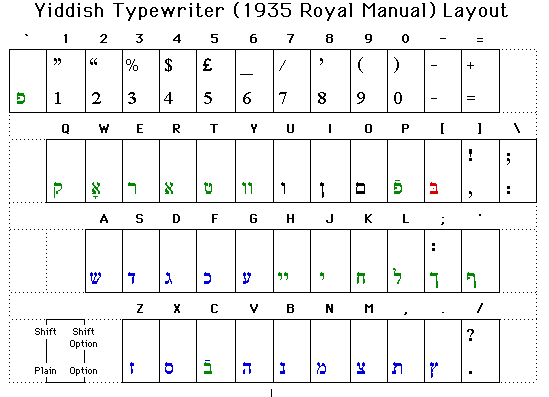
Note: click here for a modern Royal Yiddish keyboard, updated to support all YIVO-standard Yiddish combinations, and implemented as a substitute keyboard for QText.
Here’s a picture of the original Royal Yiddish Typewriter: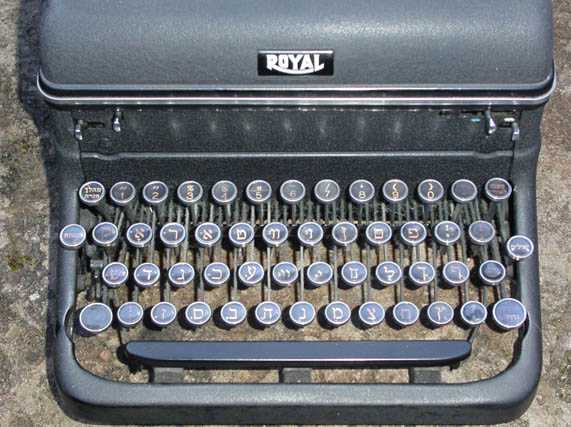
COLOR SYSTEM
(NOTE: this color scheme is under development; some of the images do not fully conform to it. It is hoped that this can be fixed within days.)
Blue: One of the 22+5 (nonfinal+final) Hebrew letters where they appear in the standard Hebrew keyboard position.
Green: One of the 22+5 Hebrew letters appearing in nonstandard Hebrew keyboard position, 11 Hebrew-letter and/or diacritic combinations, or 3 Hebrew-letter digraphs used in standard Yiddish orthography, and able to be encoded in as a single Unicode base character followed by one or more Unicode non-spacing marks (i.e., diacritics).
Cyan: used in keyboard keys assigned to keys just to denote a character relative to the position of a diacritic
Black: any other Hebrew or Non-Hebrew character
Magenta: Any miscellaneous Hebrew-letter combination not covered by one of the colors above.
Most recent update: 8 January 2023
Send suggestions, errors, ommissions to: Mark H. David <mhd@yv.org>
